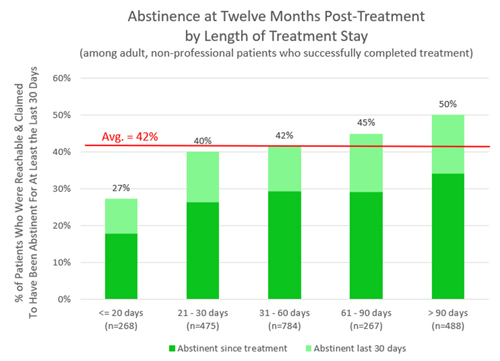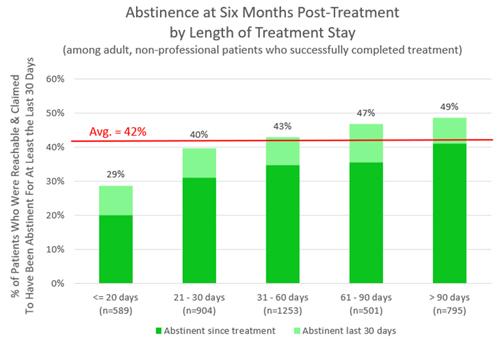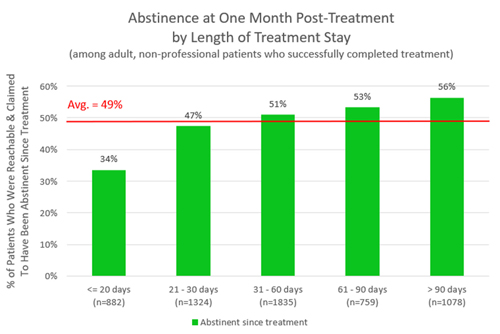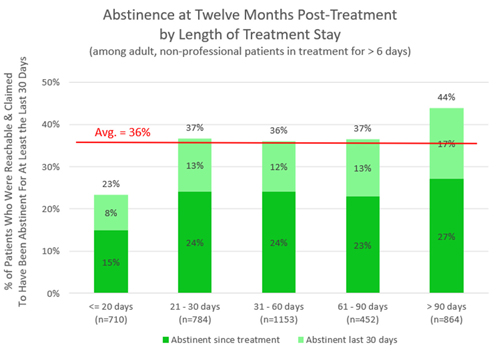
See the latest data here.
Vista’s outcomes research confirms what most treatment professionals have long believed -- the longer a patient remains in treatment, the more likely they are to remain abstinent. The following graph shows that the percentage of patients who are reachable one year post-treatment and report not having used drugs or alcohol in the last 30 days is directly related to the length of time the patients spent in treatment:

The direct relationship between length of stay and treatment success also holds true at six months post-treatment:

and at one month post-treatment:

To avoid artificially reducing the shorter length of stay results by including patients who left treatment AMA early on, the above analyses include only patients who successfully completed treatment. However, the same trends hold true when all patients who spent at least 7 days in treatment are included in the analyses, as this twelve month post-treatment graph shows:

It’s important to note that these results don’t indicate that patients must remain in residential treatment for this period of time. Most of the centers in the Vista Research Network utilize a continuum of care model and there is some indication that the amount of time spent in PHP/IOP/OP settings is even more important to long-term recovery than the residential length of stay.
Unfortunately, these results fly in the face of the ever-shorter treatment episodes that many payers are authorizing. So what can a treatment center which is passionately committed to helping patients recover do? Here are some ideas:
Train your UR team in how to use Vista’s patient summary report and comprehensive patient monitoring to negotiate more effectively with payers for additional days.
Share this data with families at intake and encourage them, if at all possible, to agree to pay for additional treatment days (perhaps on a sliding fee scale) beyond what their insurance covers.
Actively seek top-quality sober living homes to refer patients to when they leave treatment. Make sure there’s a warm hand-off, preferably by delivering the patient directly to the sober home and introducing them to the house manager.
Consider negotiating a bundled-payment contract with one or more of your primary payers akin to the agreement that the Caron Foundation has with Independence Blue Cross. In order to help treatment centers with excellent success rates negotiate these types of agreements more effectively, Vista’s sister company, the non-profit Conquer Addiction, is in the process of raising funding for an in-depth analysis of payer claims data.




